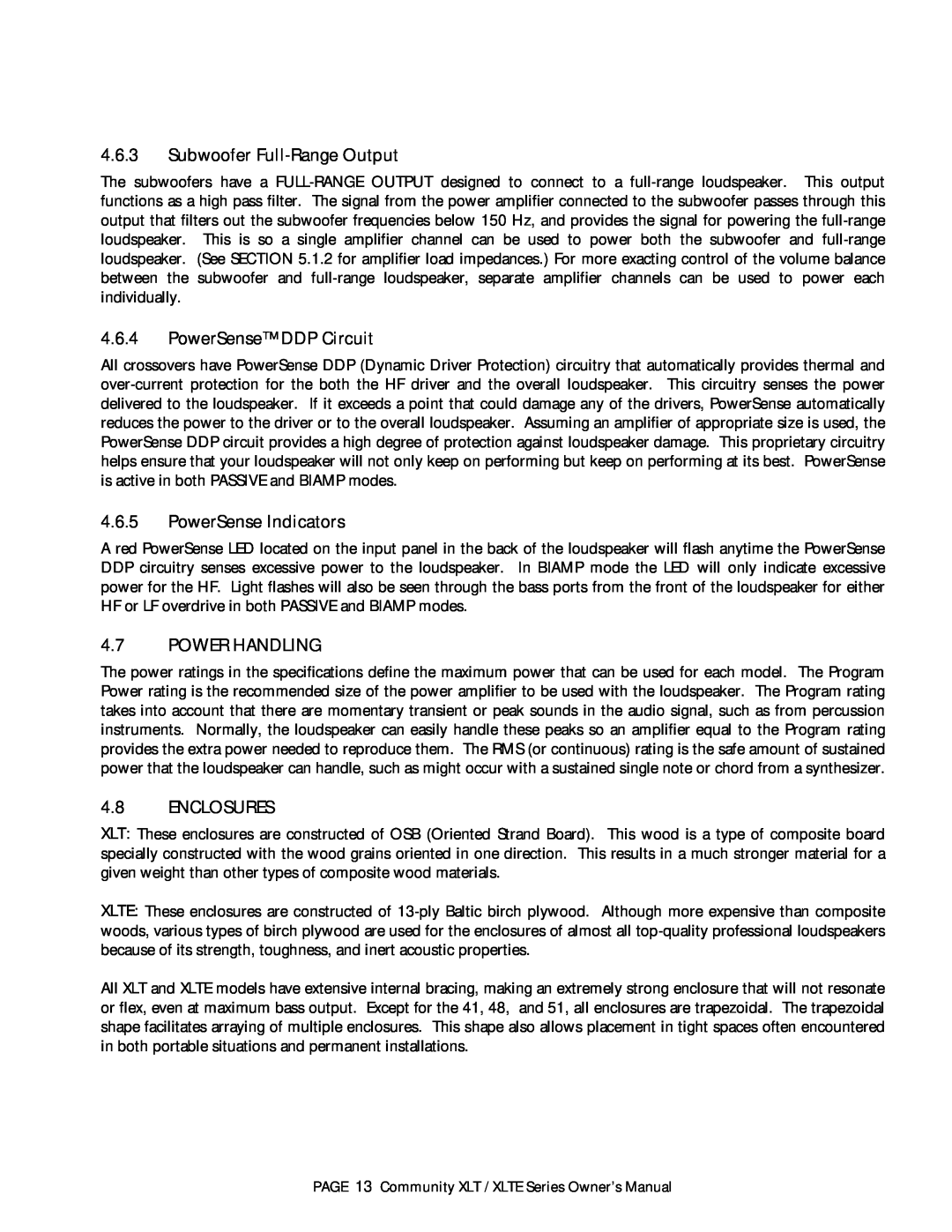4.6.3Subwoofer Full-Range Output
The subwoofers have a
4.6.4PowerSense™ DDP Circuit
All crossovers have PowerSense DDP (Dynamic Driver Protection) circuitry that automatically provides thermal and
4.6.5PowerSense Indicators
A red PowerSense LED located on the input panel in the back of the loudspeaker will flash anytime the PowerSense DDP circuitry senses excessive power to the loudspeaker. In BIAMP mode the LED will only indicate excessive power for the HF. Light flashes will also be seen through the bass ports from the front of the loudspeaker for either HF or LF overdrive in both PASSIVE and BIAMP modes.
4.7POWER HANDLING
The power ratings in the specifications define the maximum power that can be used for each model. The Program Power rating is the recommended size of the power amplifier to be used with the loudspeaker. The Program rating takes into account that there are momentary transient or peak sounds in the audio signal, such as from percussion instruments. Normally, the loudspeaker can easily handle these peaks so an amplifier equal to the Program rating provides the extra power needed to reproduce them. The RMS (or continuous) rating is the safe amount of sustained power that the loudspeaker can handle, such as might occur with a sustained single note or chord from a synthesizer.
4.8ENCLOSURES
XLT: These enclosures are constructed of OSB (Oriented Strand Board). This wood is a type of composite board specially constructed with the wood grains oriented in one direction. This results in a much stronger material for a given weight than other types of composite wood materials.
XLTE: These enclosures are constructed of
All XLT and XLTE models have extensive internal bracing, making an extremely strong enclosure that will not resonate or flex, even at maximum bass output. Except for the 41, 48, and 51, all enclosures are trapezoidal. The trapezoidal shape facilitates arraying of multiple enclosures. This shape also allows placement in tight spaces often encountered in both portable situations and permanent installations.
PAGE 13 Community XLT / XLTE Series Owner’s Manual
